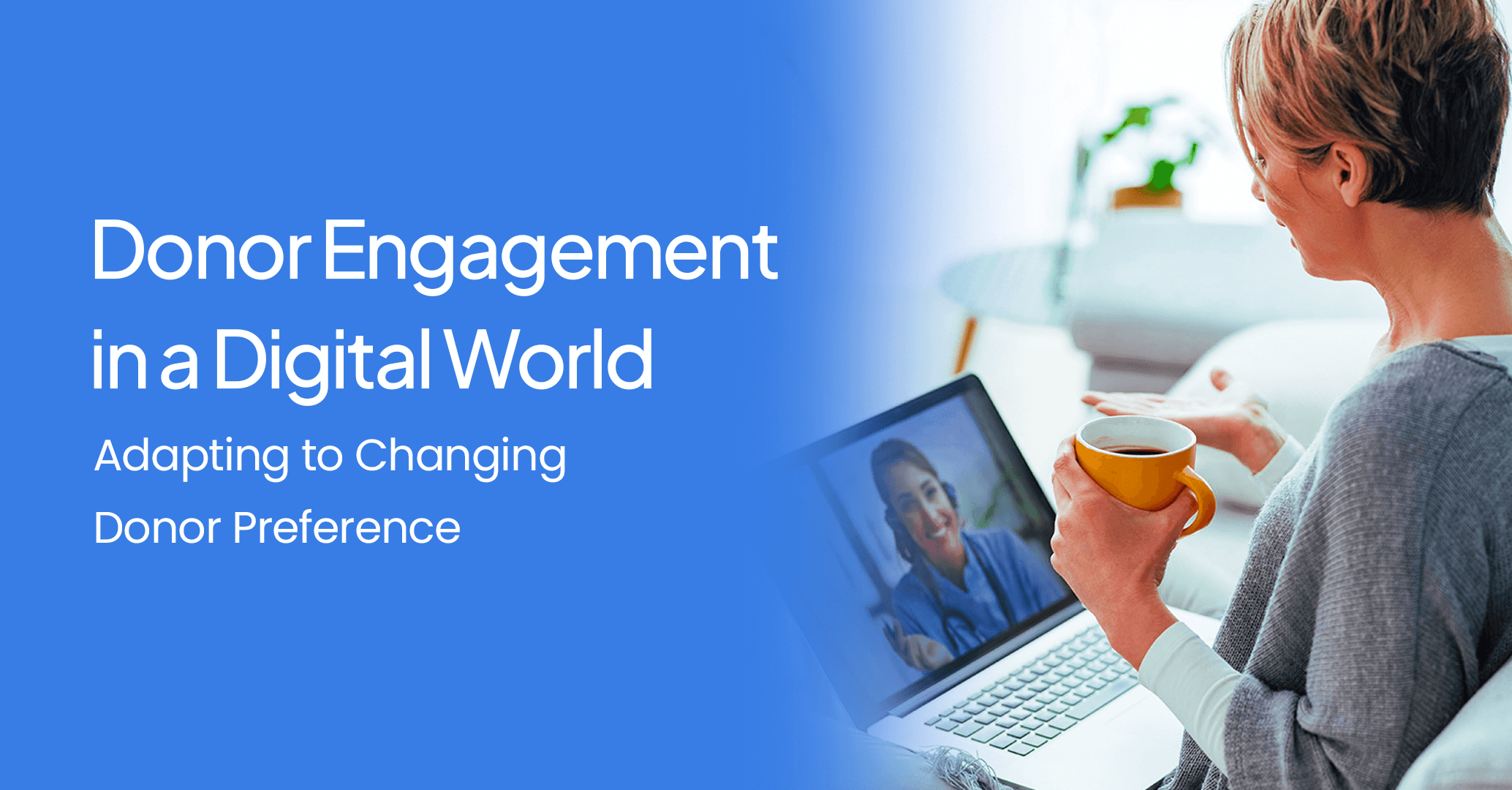The way donors engage with nonprofits and charities has changed dramatically in recent years. With the rise of digital technology and social media, organizations must adapt their fundraising and engagement strategies to meet modern donors where they are – online.
Building genuine relationships through digital channels has become critical for nonprofits to sustain donor retention and recruitment. In this blog post, we’ll explore emerging donor preferences in the digital age and strategies to modernize engagement through an integrated omni-channel approach.
The Evolving Donor Landscape
Today’s donors have high expectations for their giving experience. Accustomed to seamless online interactions in other aspects of their lives, donors now expect nonprofits to provide personalized, responsive and mobile-friendly engagement. Some key shifts in donor behavior and preferences include:
- Increased use of mobile devices for acting and processing donations. Over half of all website traffic now comes from mobile devices.
- A desire for on-demand interactions. Donors want to engage in their own time, through the channel they prefer.
- Less reliance on mail and phone strategies. Digital natives especially tune out conventional outreach methods.
- Expectations for hyper-personalization. Donors want tailored communications and customized causes to support based on their interests.
- More impact-focused giving. Donors demand evidence of impact and want to feel confident their gift makes a difference.
With these shifts, nonprofits must meet donors digitally to cultivate meaningful relationships. A strong digital engagement strategy is now a minimum requirement.
Embracing Technology for Enhanced Engagement
To meet these evolving preferences, organizations must embrace technology and incorporate it into their donor engagement strategies. This includes optimizing websites for user experience, utilizing social media for storytelling and community building, and leveraging email marketing for regular updates and appeals.
The Rise of Mobile Giving
Mobile giving has become increasingly popular, with many donors preferring to make contributions through their smartphones. Ensuring that donation processes are mobile-friendly is essential for capturing this growing segment of donors.
Social Media: A Tool for Storytelling
Social media platforms are powerful tools for storytelling and engagement. They provide a space for organizations to share their impact, update followers on projects, and create a community of supporters who can interact with and advocate for the cause.
The Importance of an Integrated Donor Engagement Platform
In managing these various digital channels, an integrated donor engagement platform becomes a necessity. Such platforms provide a centralized system to manage donor information, communication, and engagement strategies. They allow organizations to track interactions, preferences, and donation history, creating a comprehensive view of each donor. This integrated approach ensures that all engagement efforts are coordinated and effective.
Features of an Effective Donor Engagement Platform
An effective donor engagement platform should offer a range of features, including donor management, communication tools, analytics, and reporting capabilities. It should also be user-friendly, ensuring that both staff and donors have a positive experience.
Adapting Communication Strategies
In a digital world, the way organizations communicate with donors must evolve. This involves not only the channels used but also the content and frequency of communications.
Personalized Communication
Donors expect communications that are relevant and personal. Segmenting donors based on their interests, donation history, and engagement level allows for more targeted and meaningful interactions.
The Power of Storytelling
Digital platforms offer a unique opportunity for storytelling. Through videos, blogs, and social media posts, organizations can share success stories, highlight the impact of donations, and create an emotional connection with their audience.
Consistent and Relevant Updates
Regular updates are key to keeping donors engaged. Whether it’s through a newsletter, social media posts, or a blog, consistent communication keeps the organization at the forefront of donors’ minds.
Engaging the Next Generation of Donors
Adapting to digital trends is particularly crucial when engaging younger donors. This demographic is not only comfortable with technology but also expects a seamless digital experience.
The Role of Social Media Influencers
Collaborating with social media influencers can be an effective way to reach younger audiences. Influencers can help amplify the organization’s message and attract new, younger donors.
Interactive and Virtual Events
Hosting interactive and virtual events can engage younger donors who may prefer digital interactions over traditional events. These events can range from webinars to virtual fundraisers.
Overcoming Challenges in Digital Engagement
While digital engagement offers numerous opportunities, it also comes with challenges. These include maintaining data privacy, ensuring cybersecurity, and keeping up with rapidly changing technology.
Data Privacy and Security
Organizations must prioritize the privacy and security of donor data. This involves investing in secure platforms and adhering to data protection regulations.
Staying Ahead of Technological Changes
The digital landscape is constantly evolving. Organizations must stay informed about new technologies and trends to remain relevant and effective in their engagement strategies.
Closing Thoughts
The shift to digital donor engagement is not just a trend; it’s a fundamental change in how philanthropic organizations interact with their supporters. By embracing technology, personalizing communications, and adapting to changing donor preferences, organizations can forge stronger connections with their donors. This digital transformation, while challenging, offers unparalleled opportunities for engagement, growth, and impact in the philanthropic sector.
Adapting to the digital world is no longer optional for organizations seeking to thrive in the realm of philanthropy. By leveraging digital tools and platforms, embracing the power of data and personalization, and staying attuned to the evolving preferences of donors, organizations can ensure that their engagement strategies remain effective and impactful in this digital era.
